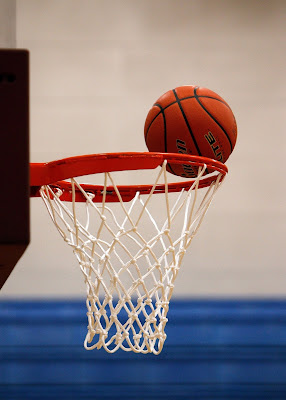All-Star Snub Effect: Fact or Fiction?
HOW WE THOUGHT OF IT
One year ago (the 2016-2017 season), Rudy Gobert of the Utah Jazz provoked an interesting question in our minds. Do players who seem to be “snubbed” from the NBA All-Star Game perform better during the second half of the season? As we thought about questions to cover for the blog, this question immediately came to mind. So, we pulled some data from NBA.com and got to work.
HOW TO DEFINE AN ALL-STAR SNUB
The first question that came up was how to determine whether a player should be considered an all-star snub or not. Ultimately, this question is very subjective, so it is difficult to force it into an objective one. We determined that an all-star snub is a player who is in the top 25 of player impact estimate or PIE, a statistic defined in the NBA.com stat glossary (https://stats.nba.com/help/glossary/#pie), that is not selected for the All-Star Game.
We pondered the all-star snub question because Gobert seemed to dramatically improve after he was snubbed from the all-star team in 2017. Under this definition, Rudy Gobert was an all-star snub during the 2016-2017 season. Gobert’s PIE was 15.4 before the all-star break and 17.7 after the break, the difference being an increase of 2.3. Using this method, it seems that what we saw in Gobert matches up with the statistics.
PRELIMINARY FINDINGS
We collected the top 25 players in PIE before the all-star break, after the all-star break, and over the entire season for the past 10 years, from the 2008-2009 NBA season through the 2017-2018 NBA season. According to how we calculated all-star snubs, in those 10 years there were 75 snubs, 27 of them improved in the second half of the season, 46 of them got worse, and 2 of them had the same PIE. The averages per year would be 7.5 snubs, 2.7 improved, 4.6 got worse, and 0.2 stayed the same. Damian Lillard had the biggest improvement, in the 2016-2017 season he improved by 4.3. Brandon Knight had the worst reaction to being snubbed, in the 2014-2015 season his PIE change was -7.2.
This information shows a negative trend in performance from pre to post all-star break for all-star snubs, but it isn’t enough information to be confident in the trend. So, we employed statistics. The way that we chose to go about determining the legitimacy of this downward trend is through the use of confidence intervals. A confidence interval is an interval that we are some predetermined percentage confident that the true population mean falls within.
CONFIRMATION
We made two different 95% confidence intervals (We checked the normality assumptions, you can see at the bottom of this page. If you don’t care about the normality assumptions, just read on.). Both confidence intervals use the number difference between the all-star snub’s pre all-star PIE and their post all-star PIE. The first confidence interval uses data that treats every player every year as a different observation. For instance, if Damian Lillard was snubbed in 2014 and 2015, then the data would treat that as two different observations. We were worried that this would leave us believing that we have more information than we actually possess. So, the second confidence interval uses data that combines players, but does not involve years. We averaged the statistics for each individual player, so if Damian Lillard had a difference of 3 one year and 5 the next year, then his one observation would be 4.
The confidence intervals give an estimate for the true average PIE difference between pre and post all-star break for all-star snubs. The first confidence interval has a lower bound of -1.05 and an upper bound of -0.12. This means that we are 95% confident that the average per player per year PIE change for an all-star snub is between -1.05 and -0.12. So, using the first method of player by year data, we are 95% confident that there is a negative effect on all-star snubs. The second confidence interval has a lower bound of -1.32 and an upper bound of -0.25. The second method is a more conservative method, yet we are still 95% confident that there is a negative effect on all-star snubs.
PROBLEMS?
The only concern left is that the change in PIE is influenced or at the worst determined by the change in team schedule difficulty. However, as can be shown by crossing the 2017-2018 players’ teams with their schedule difficulty, this does not appear to be a trend. Of the seven all-star snubs this past year, two improved with a harder schedule, two declined with an easier schedule, two improved with an easier schedule, and one declined with a harder schedule. We did not run any statistical tests on this, but the given information does appear to show that there is no correlation between schedule difficulty change and player PIE change.
FACT
We started out expecting players to improve after being snubbed from the NBA All-Star Game. We were wrong, but found an interesting trend. We began to suspect and then confirmed that the average all-star snubs’ level of play declines after the all-star break. Players like 2017 Damian Lillard and 2017 Rudy Gobert are the exception, which is why they stand out. The all-star snub effect? Fact. However, not the fact that we expected. We cannot be certain what causes the effect, but it’s interesting, isn’t it?
*The data and assumptions can be seen here.

Comments
Post a Comment